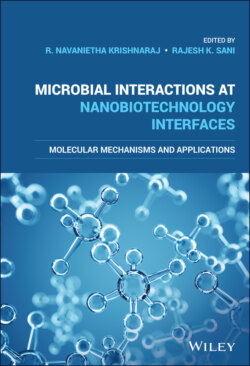Читать книгу Microbial Interactions at Nanobiotechnology Interfaces - Группа авторов - Страница 44
1.7.4 Cationic Polymer NMs
ОглавлениеPolymers with an inherent positive surface charge or added with positively charged moieties are called cationic polymer NMs. The most commonly used cationic polymer in antimicrobial application is chitosan (Rekha Deka, Kumar Sharma, & Kumar, 2015). Chitosan is a cationic polysaccharide derived from chitin by partial deacetylation. The positively charged surface moieties aid in the interaction of NM with negatively charged bacterial cell wall, which causes the rupture of membrane and subsequent cytoplasmic content leakage (Qi et al., 2004). The efficacy of the system relies on the pH, degree of deacetylation, molecular weight, and presence of other substances such as proteins, lipids, and metal ions. The major disadvantage of chitosan‐based nanosystems is their poor solubility at neutral pH causing them to precipitate in culture medium.
In general, the efficacy of the antimicrobial NMs depends on the interaction of the material with bacteria and the mechanism of action. Further, the interaction of NMs with bacteria depends on a few crucial factors such as electrostatic attraction, van der Waals forces, receptor–ligand interaction, and hydrophobic interaction. Understanding the basics of the NMs' interaction with the microbial cell is likely to pave way for the design of novel antimicrobial agents with crucial insight into their toxicity and mechanism of action. In the following sections, we discuss the interaction of NMs with microbial cells and the mode of action.
